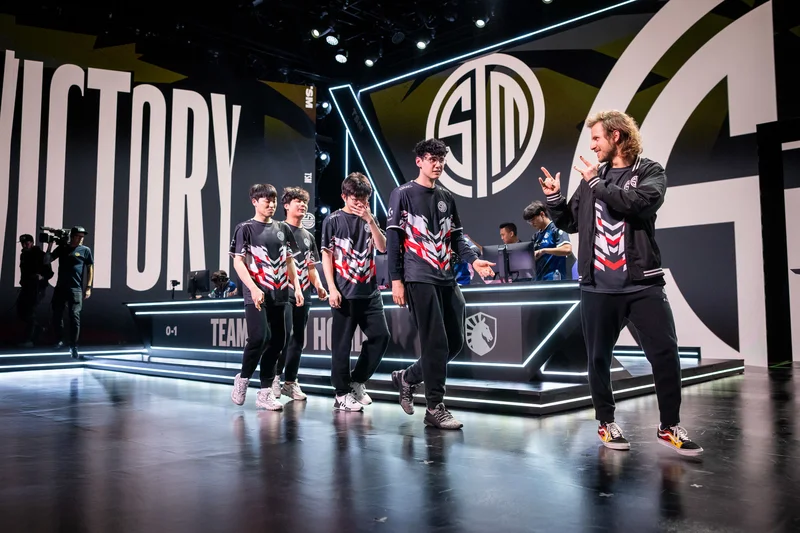XLM Insight | Stellar Lumens News, Price Trends & Guides
XLM Insight | Stellar Lumens News, Price Trends & Guides
Alright, let's cut the crap. Every few months, Wall Street and the tech blogosphere get together and decide on a new "no-brainer" stock. It’s the one company so dominant, so essential, that you’d have to be a complete moron not to buy it. For a while, it was `tsla`. Then `nvda` had its coronation. Now, the collective hivemind has anointed its new king: Taiwan Semiconductor, or TSM.
Just look at the numbers they’re throwing around. The `tsm stock price` is up nearly 50% this year. It just blew past its 52-week high, sitting pretty over $300 a share. Revenue in the last quarter jumped a staggering 44% to over $30 billion. They’re crushing everyone. While `nvda stock` and `amd stock` are having a good month, TSM is leaving them in the dust.
So, is it time to mortgage the house and go all-in? Is TSM the last safe bet in a market that feels increasingly like a casino with a cracked foundation?
Not so fast. I’ve seen this movie before, and it rarely ends the way the hype-men promise.
Let's be real: TSM’s dominance is terrifyingly absolute. They are the world’s foundry. If the AI revolution is a gold rush, then NVIDIA, AMD, Broadcom, and every other chip designer are just prospectors running around with big ideas. TSM is the only company on Earth selling the high-tech, diamond-tipped shovels—the 3-nanometer and 5-nanometer nodes—that can actually dig up the gold. Those two advanced processes alone account for nearly 60% of their sales.
You can practically hear the hum of their cleanrooms, a sterile, money-printing silence broken only by the sound of another billion dollars being wired to their accounts. They’re launching a 2nm chip this year, with an even more exotic "A16" node planned for 2026. This is their moat. It’s not just a moat; it’s a technological grand canyon, and everyone else is on the wrong side.
To maintain this lead, they’re planning to spend somewhere between $38 billion and $42 billion on capital expenditures in 2025 alone. That’s more than the entire GDP of a small country. This spending is impressive. No, 'impressive' doesn't cover it—it's a white-knuckle, bet-the-farm gamble of galactic proportions. What happens if the AI boom isn’t infinite? What happens if the next technological leap makes their multi-billion-dollar fabs obsolete overnight? They’re building a rocket ship, but they’re also strapping an ungodly amount of fuel to it.
For years, the big, unspoken risk with TSM was simple: nearly all of their magic happens on one island. An island that China has made very clear it considers a rogue province. Now, facing reality, TSM is on a frantic, globe-trotting spending spree to "mitigate geopolitical risk."

Give me a break. This isn't "mitigation." This is a panicked, multi-billion-dollar scramble to build lifeboats while the string quartet on the Titanic is still playing. They’re building massive new fabs in Arizona, Japan, and Germany. The U.S. facilities alone are a $165 billion project, and they’re supposedly sold out through 2027.
On the surface, this looks smart. Diversification, right? But what the press releases don’t tell you is the brutal cost of this strategy. The company has already admitted that this global expansion will create a 2-3 percentage point drag on their gross margins. That’s the "PR-speak" translation. The real translation is: "Building chips outside of Taiwan is a neccessary evil that is way more expensive and far less efficient, and it’s going to eat into our profits forever." They’re spending billions to replicate what they perfected at home, and we're supposed to just ignore the fact that it's a fundamentally worse business model, and honestly...
Does anyone really believe a fab in Arizona, with its different labor laws, supply chains, and work culture, will ever run as smoothly as the well-oiled machine they built in Hsinchu? It’s a hedge, but it’s one of the most expensive insurance policies in corporate history.
This brings us back to the central question. You’ve got the cautious spreadsheet jockeys at Zacks slapping a "Hold" rating on the stock, pointing to these headwinds. Then you’ve got the storytellers at Motley Fool calling it an "excellent buy," dreaming of endless AI-fueled growth, with some arguing there are 3 Reasons You'll Regret Not Buying Taiwan Semiconductor Stock Before 2025 Is Over - The Motley Fool.
The bulls will point to the valuation. TSM's forward P/E ratio is around 27. That looks cheap, almost comically so, next to Broadcom (`avgo`) at 38 or NVIDIA at 33. It’s even cheaper than the sector average. That’s the entire "no-brainer" argument in a nutshell: you get the undisputed king of the most important industry on Earth for a discount.
But is it a discount, or is the market correctly pricing in the risk of, you know, a potential global catastrophe? This ain't a simple valuation game like comparing `amazon stock` to a brick-and-mortar retailer. A low P/E doesn't mean much when the geopolitical X-factor could send the whole thing to zero overnight. The "T" in TSM might as well stand for "Target."
Then again, maybe I’m the crazy one. Maybe their technological lead is so vast that none of this matters. Maybe they’re the one company that’s truly too big, and too essential, to fail. But a "no-brainer"? That implies you don't have to think about it. And if you’re not thinking long and hard about the risks here, you’re not investing; you’re just gambling.
Here’s my take. Buying TSM stock isn't a "no-brainer." It’s a gut-wrenching, high-stakes bet that engineering brilliance can outrun political gravity. You’re buying a technological marvel, an undisputed monopoly on the future, that just happens to be located in the world's most volatile geopolitical hotspot. The company is incredible. The stock is a paradox. It’s a bet that the world holds itself together, and in 2025, that feels like the riskiest bet of all.